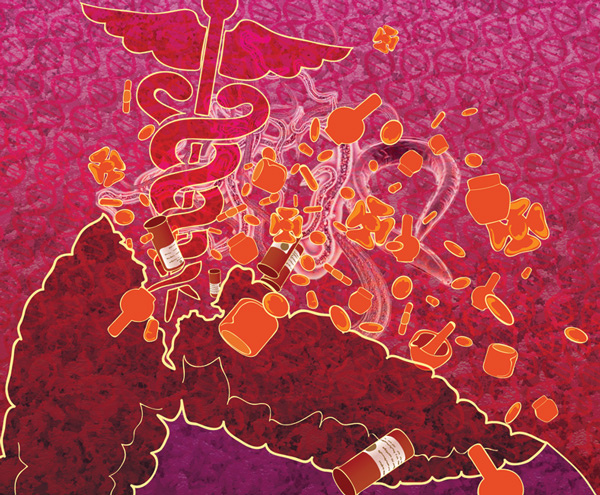A pediatrician has many instruments in their figurative toolbox to clinically manage and treat a patient — antibiotics for the infection-ridden child, serial bilirubin labs for the jaundiced neonate or a surgical consult for the ruptured appendix. When I began my pediatrics clerkship as a third-year medical student, I thought the tools that comprised a pediatrician’s toolbox were anything that could produce an objective clinical improvement in a child’s condition. However, there happened to be one instrument that I had overlooked, tucked away towards the bottom of the box, but nevertheless polished, utile and reliable.
I stumbled into the bustling pediatric emergency room and was immediately tasked with seeing an adolescent female who had just arrived. I drew back the mint green curtain to reveal a frail girl crouched in the center of the hospital bed. Her hands were clasped across opposing elbows — a rigid chain locking her knees into her chest. A slender chin filled the gap between her knees, and her bleary eyes were lost in the sea of marble tile below. Her parents, sitting on the edges of their seats, perked up simultaneously. I leveled with her eyes crouching down to introduce myself. As if on cue, two fat tears spilled out and zigzagged down her cheeks. She told me about her overwhelming worry for the last eight months. Her parents chimed in with their observations as caverns of concern deepened in their foreheads. She checked off the criteria for generalized anxiety disorder. And so, I opened my toolbox to consider what she may benefit from — thyroid studies and a consult with a psychiatrist. Before starting off with the standard tools, I opted to initiate a different treatment.
“It is going to be okay, honey. You all made the right decisions by coming to the hospital today,” I offered.
It did not seem like much as I said it — just a few words of reassurance, spoken simply from the heart. I was taken aback by how quickly the worried lines dissipated from her father’s forehead, how tense diaphragms relaxed to finally allow for a breath’s exit, and how the patient’s eyes refocused to meet mine — these were improvements. Reassurance was a tool with a rapid onset of action unmatched by the speed of any anxiolytic drug I had seen. Its effects could not be quantified objectively like a serum thyroid stimulating hormone but could be qualified in hope.
My patient was admitted to the hospital, received the appropriate medical care and was referred to an outpatient psychiatrist to manage her anxiety. I continue to reflect on our interaction and on the immense power we have as medical providers to use reassurance to put patients and their families at ease. Being able to even temporarily lighten the burden of some of the most painful moments with a simple string of syllables demonstrates the power of hope, regardless of prognostic certainty. When the effects of reassurance are so immediately apparent, it becomes as vital for us to offer a gesture of faith as it is to provide medical treatment to patients. As I continue along my medical journey, I hope to discover even more tools in my toolbox — tools that will not only manage imbalances in electrolytes but that will also restore imbalances in the patient spirit.
Image credit: Medicine from worms by aaron.bihari is licensed under CC BY -SA 2.0.


